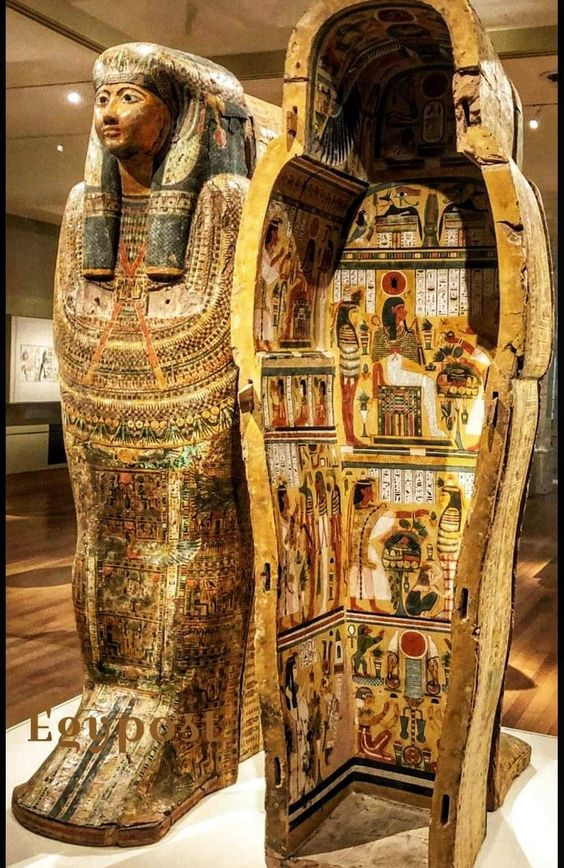𝐂𝐨𝐟𝐟𝐢𝐧 𝐨𝐟 𝐁𝐚𝐤𝐞𝐧𝐮𝐭, 𝐜. 1000-900 𝐁𝐜
Egypt, Thebes
3rd Intermediate Period, late Dynasty 21
Gessoed and painted sycamore
Cleveland Museum of Art
This is one of the finest examples of painted wooden coffins made for the priests of Amen and their families at Thebes during Dynasty 21 and early 22.
The pharaohs of this time were no longer buried in the Valley of the Kings, but instead built tombs in the Delta, far to the north, where they resided. Security was lax in the Theban necropolis. The coffins and funerary goods of the wealthy citizens of Thebes were placed in unmarked and undecorated family tombs cut into the cliffs on the west bank of the Nile. All the care and detail that in more prosperous times were devoted to the decoration of the tomb chapel were now lavished on the elaborately painted coffins.
Every available surface is crowded with religious scenes, images of funerary gods and goddesses, protective spells, and magical symbols. The deceased appears mummiform. An elaborate floral collar entirely covers the upper body, exposing only the separately attached hands (now lost). A pair of red “mummy braces” are crossed over the chest, their point of intersection marked by a winged sun disk. The lower body is covered with tiny figures modeled in gesso against a yellow background, which gives the effect of gold


